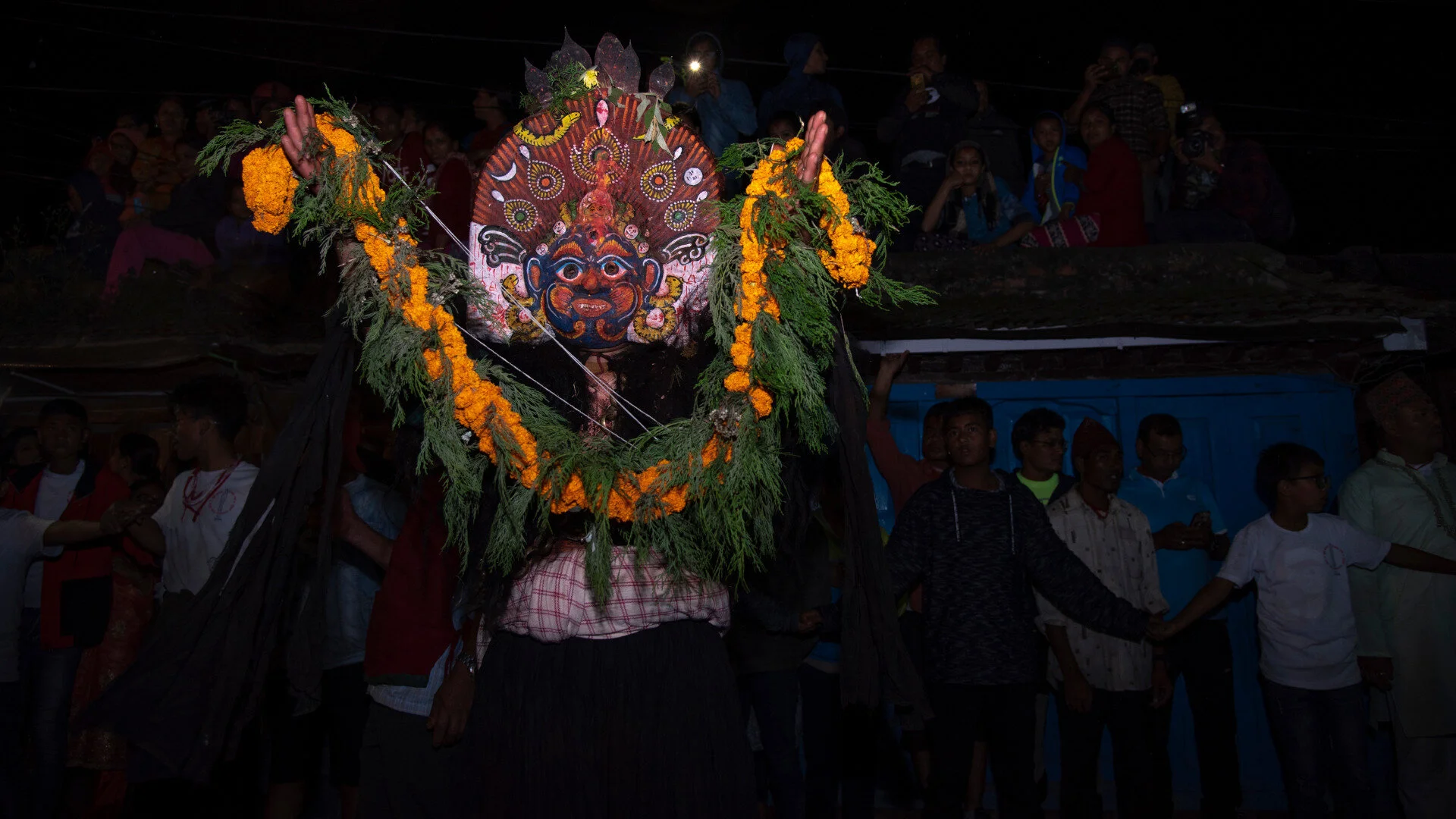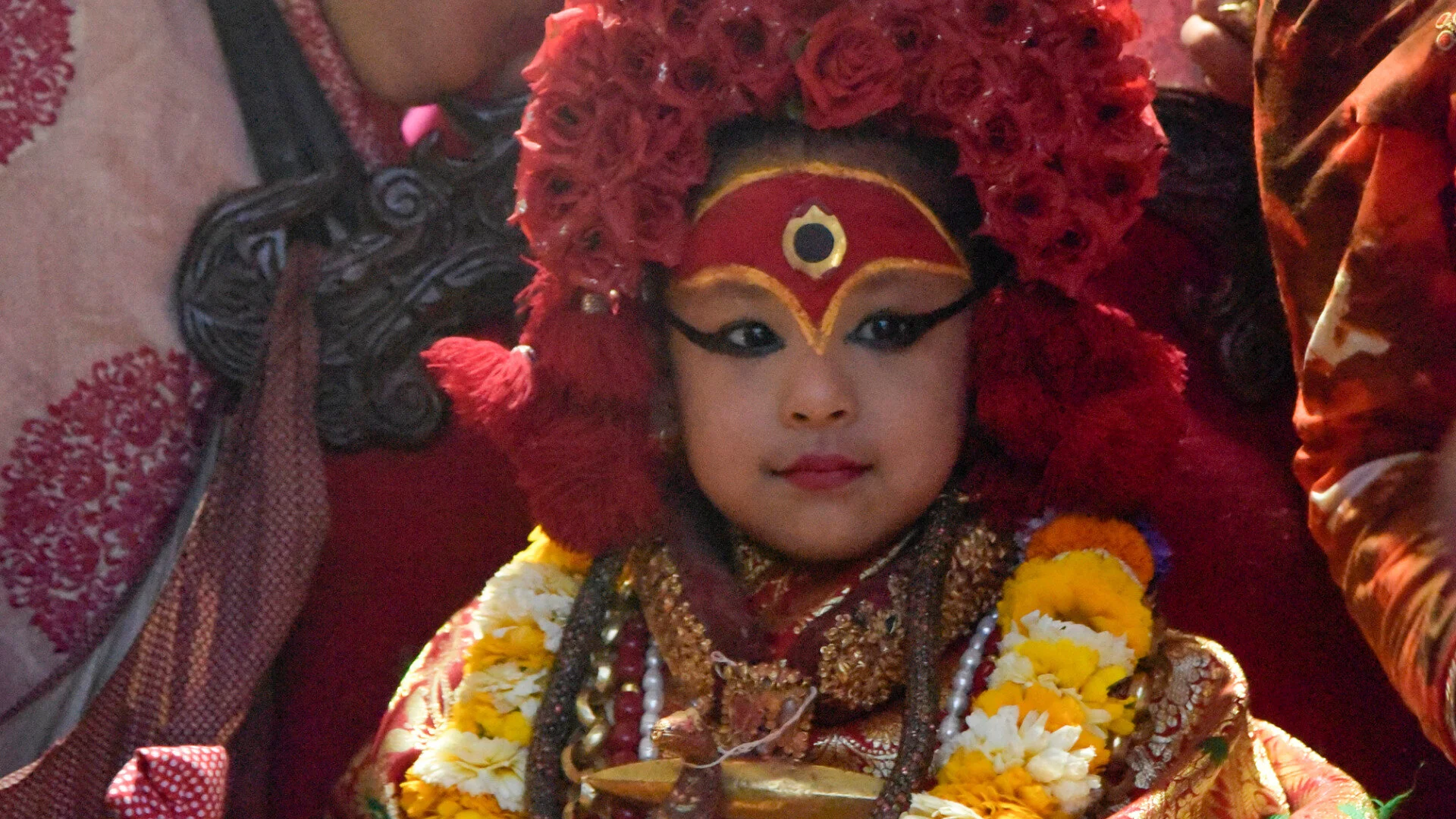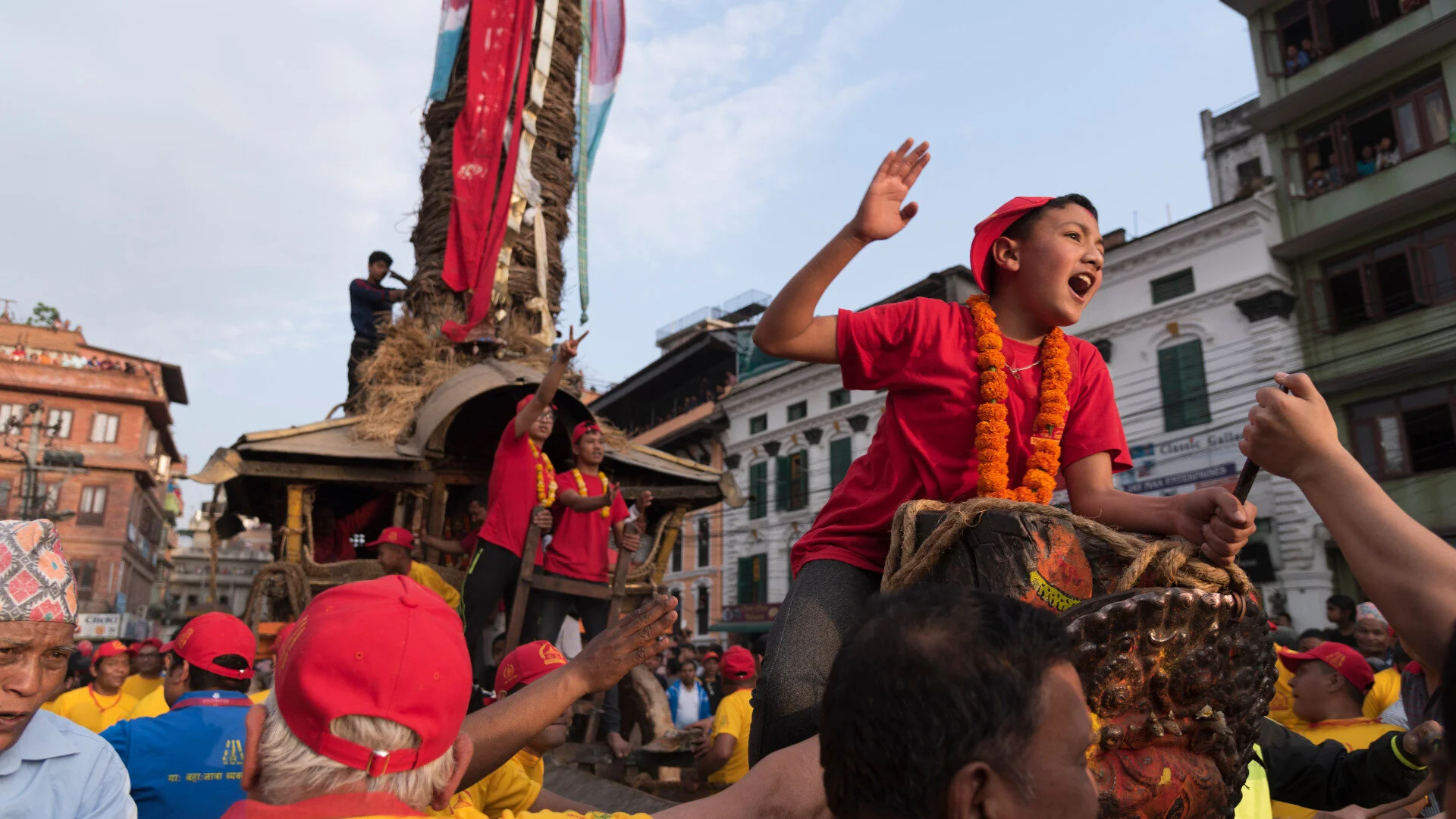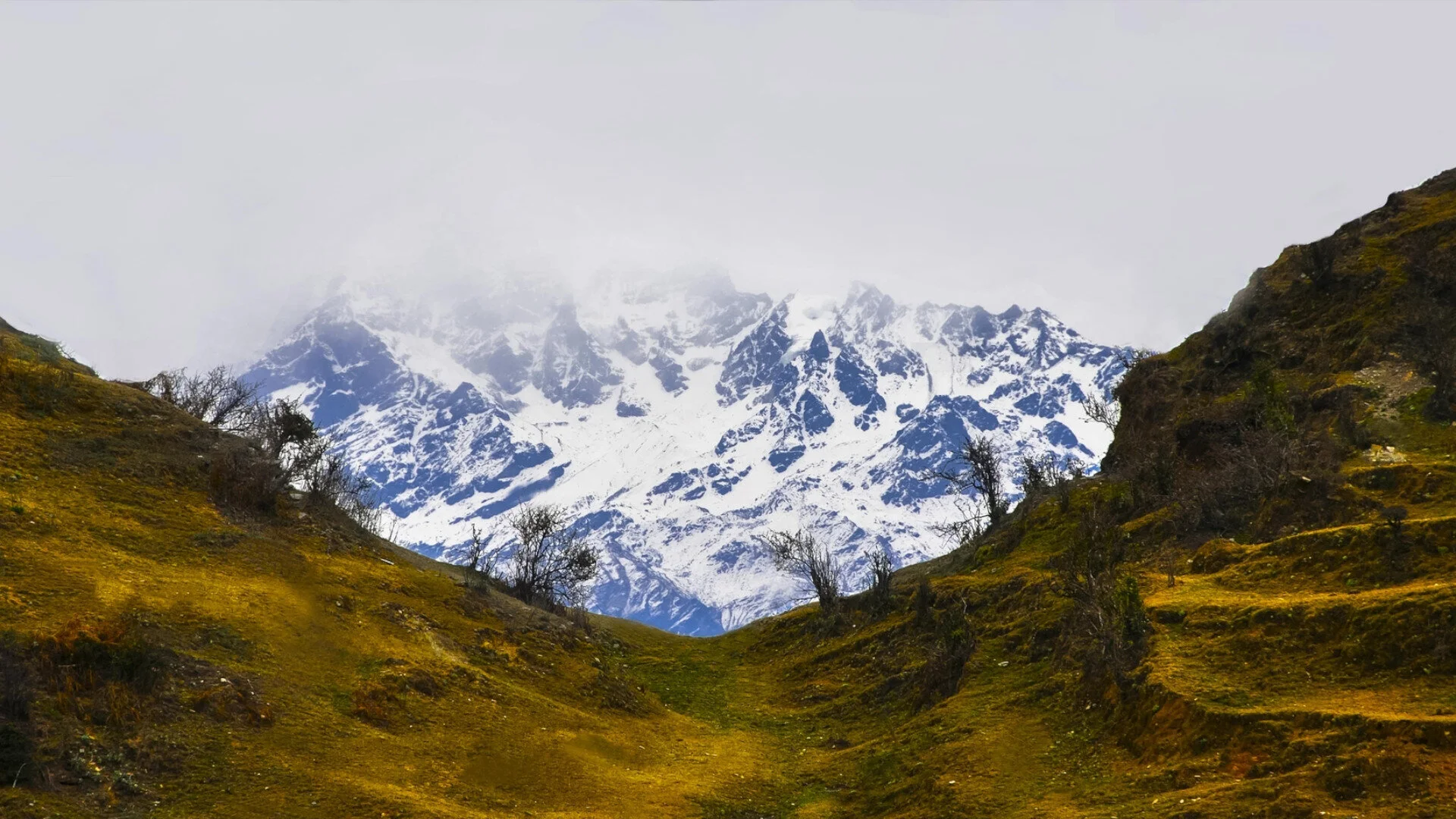Lalitpur, a city of diverse culture, art and tradition is home to many wonders and mysteries. In it lies a sacred space which has stood the test of time and outlasted various dynasties that once battled to rule this glorious city. This sacred space is no other then Kwa Bahal, which today is also known as the Golden Temple of Lalitpur.
The Navadurga masked dance is performed twice a year: during Dashain and Yomari Punhi. The idols of Bhramayeni, Balkumari, Bhairava, and Navadurga are carried around the town in chariots. A group of men who observe religious rites adorn the masks of the Navadurga Gaan and present the iconic traditional dance at the Dabhu (open-air stage) at the Lacchi (communal square) within the city.
Durgas are the various demonic manifestation of Parvati, the Shakti of Shiva, and Navadurga means nine Durgas, Mahakali, Kumari, Barahi, Brahmayani, Mahesvari, Viasnavi, Indrani, Mahalaksmi, and Tripurasundari. Navadurga dance, a legendary traditional mask dance of Navadurga Bhawani of Thecho is performed every year during Vijaya Dashami and the days following the "Yomari Punhi" festival.
The Legend of Min Nath: smaller chariot paraded along the streets of Patan during Rato Matsyendranath festival worship dates back longer than of Rato Matsyendranath. Before the Rato Matsyendranath festival in Kathmandu, there use to be another chariot festival. A chariot of an idol, Min Nath or Karunamaya.
A smaller chariot pulled by children and young adults embarks from the heart of the city, to welcome Karunamaya. According to oral traditions, being the elder god of Lalitpur without his permission, Karunamaya cannot enter the city. Thus, Chak Baha Dyo comes to the outskirts of Lalitpur to ceremonially welcome Karunamaya.
A tale that relates to Yog Narendra Malla, a 17th century Malla King who told his people that till the golden bird stays perched atop the serpent head, the elephants remain standing on the stairway, and the Gaurda doesn’t lay pearls as large as hen’s egg. Let his countrymen know that he is alive inside his Royal Palace.
Every city has it’s riveting tales passed down from one generation to another through written or oral traditions. These folk tales help create an aura of mysticism and magic; bring life to the city. Such as the legend of “The little golden bird of prosperity,” atop a serpent head rising above the golden statue of King Yog Narendra Malla at Lalitpur Dubar Square.
The Himalayas that belt across Northern Nepal holds some of the most magical destinations in the world. Concealed by tall peaks and clouded under the heavy snow, the experience of discovery is as close to finding Shangri-La. Places invisible, trail treacherous, and weather unpredictable but yet the fruit heavenly.













